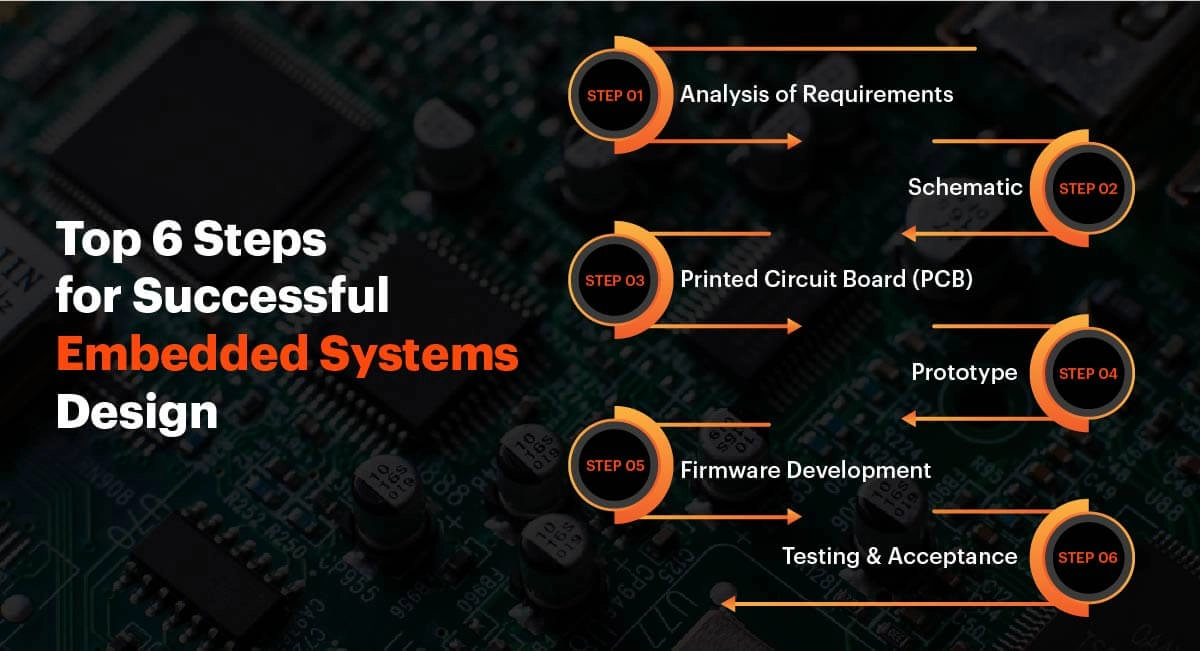Top 6 Steps for Successful Embedded Systems Design

Top 6 Steps for Successful Embedded Systems Design:
Analysis of Requirements – The first and vital stage in embedded system design is to collect and analyze the requirements of the product and list them into specifications. It is vital to focus on every single requirement from your respective client or manager. Begin by clearly defining project requirements, including functionality, performance, and constraints. Consider factors such as power consumption, size, and environmental conditions. Engage stakeholders to ensure alignment with project goals.
Schematic – The hardware designers can commence building the schematic after understanding the complete requirements and translating those into specifications. At this crucial stage, it is a challenge for the design team to choose the right microcontroller and other related components for the circuit. The heart of the embedded system is known as the microcontroller, and many things such as peripherals, power consumption, memories, speed, and cost have to be considered before arriving at the final decisions.
Printed Circuit Board (PCB) – After the schematic process is completed the next vital task is to design the Printed Circuit Board for the embedded system. PCB design is a critical process and the designer needs to apply robust practices for manufacturability, functionality, and reliability. When working on a mixed-signal circuit or high-speed microcontroller,PCB design gets complicated. High-speed results in problems related to mixed-signal designs and electromagnetic interference (EMI) that require efficient noise-coupling mitigation, and ground separation measures.
Prototype – You will need to work on the prototypes, once the Printed Circuit Board (PCB) layout passes the Design Rule Checking (DRC) test which is free from error. It includes the time taken for developing any systems and testing them.
Firmware Development – Embedded system design includes the hardware that is only part of the equation. At this stage, firmware designers bring the hardware to life by using code to make it work. Practically, any single misplaced line of code results in many hours of debugging, and overall developing embedded software and firmware development is still a time-consuming process.
Testing & Acceptance – An ideal embedded system design has to pass stringent tests before its design is approved for deployment or manufacturing. The Embedded system needs to pass the functionality test cases and the circuit must be well tested for reliability. Implement a rigorous testing and verification process to ensure the reliability and functionality of the embedded system. Conduct unit tests, integration tests, and system tests to identify and resolve issues early in the development cycle. Use simulation tools and test benches to simulate real-world conditions and edge cases.
Avench is one of the leading embedded companies in the United States. To know more information about embedded product design and embedded systems please subscribe to our blog. For any sales queries, contact us at +1 (775) 404-5757. You can also email us at sales@avench.com – we would be happy to assist you.

